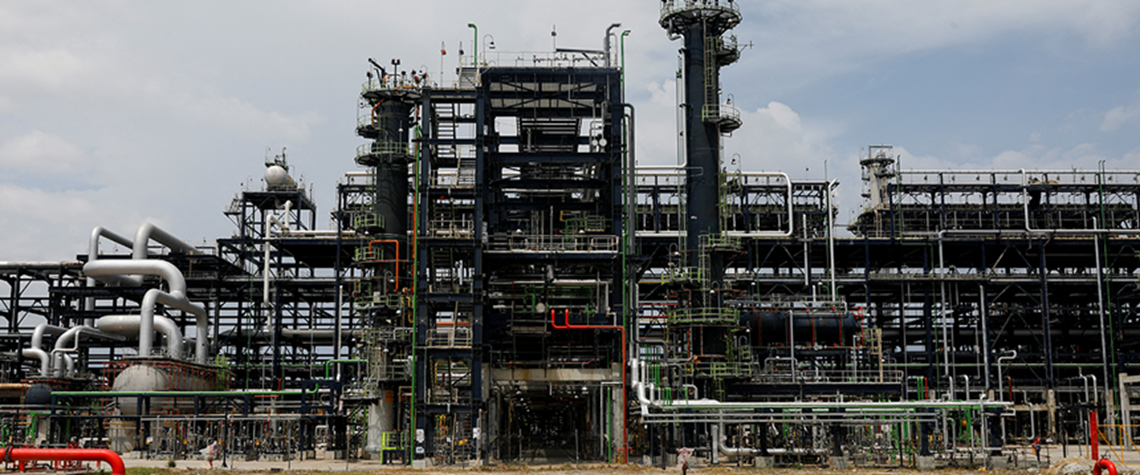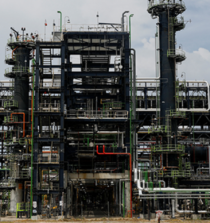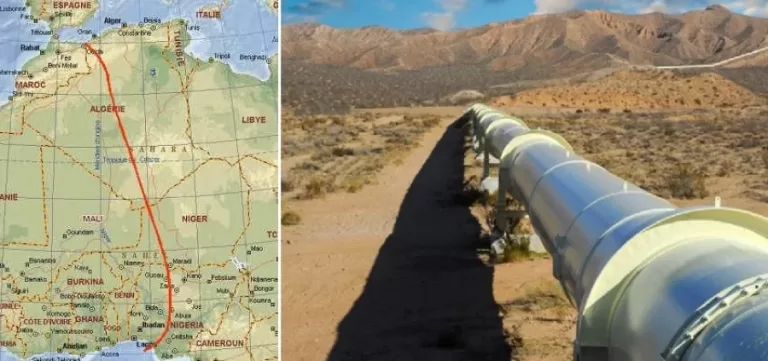By Simon Ferrie
Nigeria’s mammoth Dangote refinery is finally expected to start producing gasoline soon. But although gasoline production is one of the facility’s primary goals, Africa’s largest refinery is already having an impact on crude flows and other refined product markets.
A widely reported fire at the refinery on 26 June was contained and did not affect operations or result in casualties, Dangote spokespeople stated on various Nigerian news channels, adding the incident took place in a wastewater treatment unit. But the fire is a reminder that the refinery remains relatively vulnerable to outages, due to its unique design. Dangote has an installed capacity of 650,000b/d but comprises “only one enormous crude distillation unit [CDU]”, stressed James Gooder, vice-president for crude at price reporting agency Argus, who explained that if that CDU is offline, the facility will not be able to produce fuel at all.
Gasoline goals
But vulnerabilities aside, the wider market remains focused on when the refinery—which is already in operation and exporting products such as fuel oil—might start gasoline production. Gasoline is a key priority for the project, and a stated intent behind the refinery development is to wean Nigeria—and, to a lesser extent, the rest of West Africa—off expensive gasoline imports, largely from refineries in northwest Europe. Abuja has already ended its expensive policy of subsidising imported gasoline for domestic sales, but crucially the Dangote refinery has yet to step in to provide the country with cheaper, domestically produced gasoline.

However, the refinery now appears poised to reach this fuel milestone, analysts agreed, although initial output may be limited. “The refinery is set to kick off gasoline production in July,” said Andon Pavlov, senior manager for downstream analysis at analysis firm Kpler. “As we move closer to July, the drum roll beats faster, especially in anticipation of the long-awaited secondary units [at Dangote],” said Pamela Munger, lead market analyst at analytics firm Vortexa, citing nameplate production capacities of “325,000b/d of gasoline, 150,000b/d of diesel and 55,000b/d of jet/kerosine”. “Most of the gasoline is expected to be retained for domestic markets, but the majority of diesel and jet fuel is likely to be exported”, Munger added.
“The refinery is set to kick off gasoline production in July” Pavlov, Kpler
Pavlov suggested that “while the reformer will begin operations [in July], the CDU’s low processing rates mean the reformer will only reach 50,000–60,000b/d, or operate at reduced rates”, depending on the API of the crude utilised.
Nigeria recently lowered its sulphur limit on products, in an apparent effort to reduce emissions and encourage purchases of Dangote produced products. The mandate for cleaner fuels is in contrast to the dirty, high-sulphur fuels imported into Nigeria for long time, noted Argus’ Gooder.
Pavlov explained that there are different ways in which the refinery can produce various grades of gasoline or blending components, but that “Euro VI grade gasoline production will hinge on the startup of the Penex and [residue fluid catalytic cracking] RFCC units… We expect the RFCC to be commissioned in Q4, stabilise, and ramp up operations in Q1 2025.” It therefore may be months until Dangote is able to near its full gasoline output potential.
Atlantic competition
“Nigeria is on track to import 230,000b/d of gasoline from Europe for the first half of this year,” Munger stated, but this these volumes are expected to slow over the rest of the year “as the Dangote refinery continues raising runs at primary and secondary units”. The more progress is made at Dangote, “the more it is a cause for concern for Atlantic Basin refineries”, she continued, explaining that there is an increasingly competitive gasoline sector.
She noted that the gasoline demand outlook in the Atlantic Basin is “not so bright”. Mexico is a significant importer, but that may change with the planned startup of the Dos Bocas refinery. “The peak of US summer gasoline demand has now passed, and European gasoline demand is not likely to surge higher any time soon to plug the gap left by fewer imports by Nigeria,” said Munger. The Dangote refinery was built with the stated goal of supplying Nigerian domestic needs first, but Gooder suggested it might come to supply not only wider West Africa, but also potentially southern Africa and even Latin America. It is “not that far from the Gulf of Guinea to Brazil” and Dangote is a “commercial refinery and it will be run on commercial principles”, said Gooder.
Beyond gasoline
But while gasoline is a priority for Dangote and Nigeria, the facility is already exporting cargoes of other products. Low sulphur, straight run fuel-oil shipments have gone to the US, Caribbean and Europe, but both Kpler and Vortexa data noted a recent shift, with the latest batch of cargoes going east of Suez, bound for destinations such as Fujairah and Singapore. Further tracking data indicates that naphtha shipments “have been moving both east and west”, Munger said, while “diesel/gasoil exports have predominantly stayed in Africa”.
“Dangote is already leaving a mark in the jet markets, since the specifications there are much easier to hit”, explained Pavlov, a point echoed by Vortexa data showing that, in recent months, supplies of the aviation fuel have gone to various destinations in the Atlantic Basin, including West Africa, Brazil and Northwest Europe.

Crude sourcing
Another key aspect of the project is the use of Nigerian crude, so some observers were surprised—and commentators within Nigeria were disappointed, or even angry—when the facility imported some cargoes of WTI crude from the US. But tracking data from Vortexa indicates that the bulk of Dangote’s feedstock to date has still been domestic Nigerian crude.
The facility’s crude imports “have exclusively been sweet crude, mainly light”, Munger said, with 75% originating at Nigerian ports and 25% comprising WTI loaded in the US Gulf. However, observers have previously suggested that the refinery is likely to up its intake of medium-sweet West African barrels and further reduce imports of WTI as the lengthy ramping-up and commissioning process gather pace.
Source: Petroleum Economist









